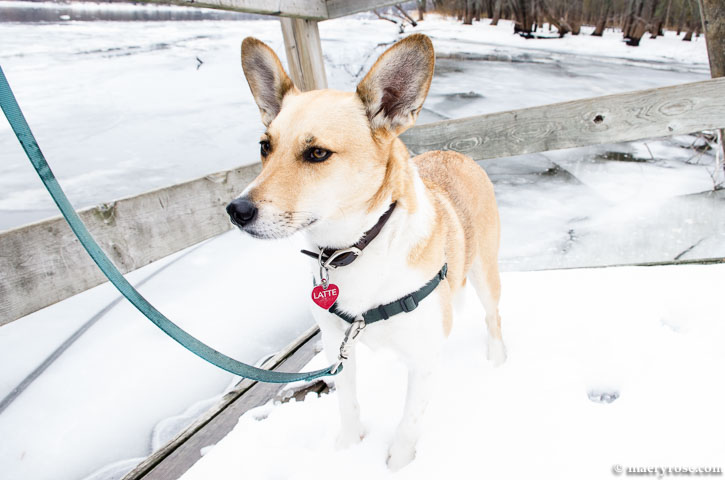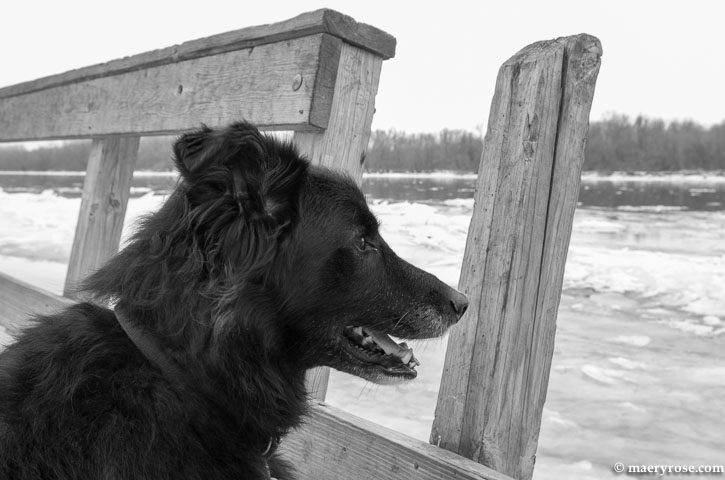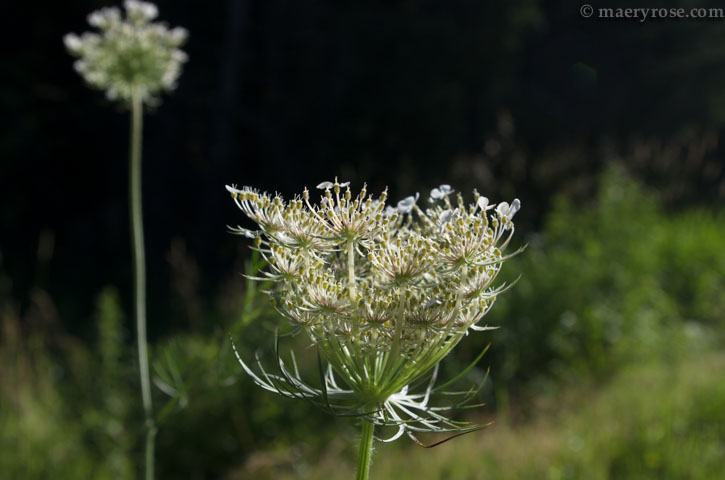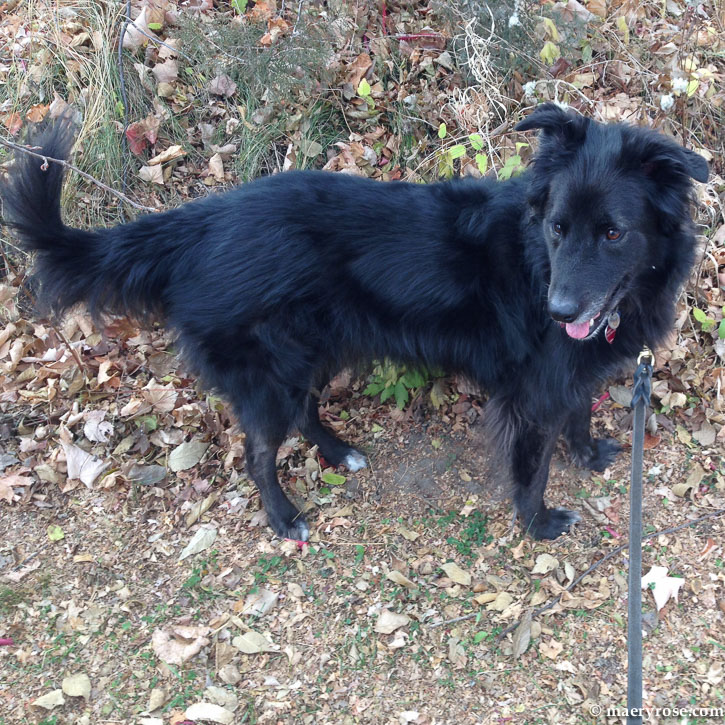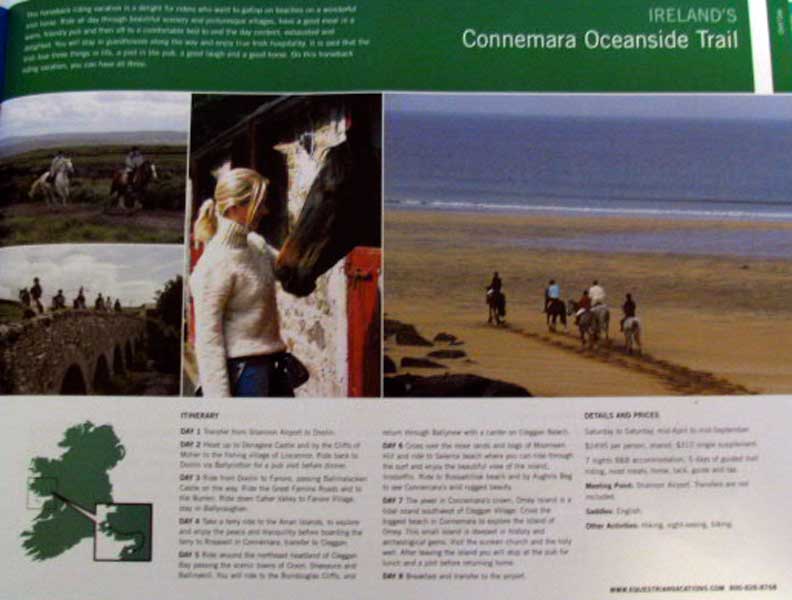A Dog for Every Season of Life
The second presentation I went to at Midwest Mountaineering’s Outdoor Adventure Expo, was called “Tails to Tales,” presented by Paul Schurke. You can read about the first presentation I went to about Travel and Adventure Writing in my post yesterday.
The description of the class said that Paul Schurke will “share his favorite dog stories and offer tips on crafting your own repertoire of animal tales.” I was looking forward to getting solid tips about how to write better stories about my dogs.
An hour later, I was feeling pretty disappointed as all I’d heard were stories about dogsledding, the history of canine evolvement, and a bit of history on how dogs have been involved in our lives throughout the ages.
But I didn’t realize just how much information I’d walked away with until I started complaining to Steve about the presentation and realized that I was telling him some pretty interesting stories that I’d learned about during the class. I’d actually gotten some great information. Even though I wasn’t told in five easy steps how to craft my own tales, I had learned a few things about what makes a story something memorable and worth repeating.
I heard the story of how sled dogs were used to bring serum from Nenana, Alaska to Nome, to treat an outbreak of diphtheria in January of 1925. This was about a 674 mile trip through very harsh conditions. To save time, a musher named Leonhard Seppala decided to cross the Norton Sound, an inlet of the Bering Sea, where ice often separated from shore and stranded travelers on ice floes. It was 85 degrees below zero, counting the wind chill, and a blizzard had turned visibility to zero. Seppala relied on Togo, his lead dog, to guide them across the ice. Seppala’s team traveled for about 261 miles – double the length that any other team went.
But what happened, as so often occurs in the media, is that the dog who crossed the final fifty-five miles of the trip and brought the serum into Nome, was turned into the hero. This dog’s name was Balto. He was turned into a Hollywood celebrity and you can visit his statue in Central Park. But things turned out okay for Togo. He was loved and cared for by Seppala and sired many pups. Several modern sled dog trainers trace their dogs back to Togo.
I also learned about Turnspit Dogs – dogs bred and used to run in a wheel that looks a lot like a hamster wheel, to turn a roasting spit in kitchen fireplaces. It’s as warped as it sounds, I’m afraid. These dogs were your basic kitchen appliances back in the day.
Paul Schurke owns and runs a place called Wintergreen in Ely, Minnesota that takes people out on dogsledding trips. He uses the Canadian Iniut dog for his teams. They are a smaller sled dog and not as fast as the Husky but they are a very strong pulling dog.
My favorite story that Schurke told was about how he ended up with a dog named Sam. Sam appeared to be a stray dog who was following Schurke’s team as they were crossing the Bering Strait (I think that’s the right place). When one of Schurke’s dogs hurt his paw and was removed from pulling the sled, this stray dog, who had been keeping a safe distance between himself and the dog sledders, gradually slipped into the injured dogs spot with the team. They eventually managed to build enough trust that they were able to harness Sam. They figure out that he must have been lost by another sled team as he was a highly trained and skilled dog that they eventually put into the lead dog position. There is information here about Paul Schurke’s dog sledding experiences with people such as Will Steger and Ann Bancroft.
Despite not being told the five tips for creating a good dog story, I wrote down what I think goes into a good dog tale:
- Dog heroism – the part dogs play in saving people’s lives, such as in the 911 search and rescues
- A dog’s normal everyday role in people’s lives – for example, how dogs teach us to live in the moment and start each day fresh and bug us to take them for walks so we get some exercise and fresh air
- Services dogs stories – from dogs who help someone with a sight loss to dogs who help someone with OCD by stepping in to block them from compulsive behavior
- Lessons dogs teach us about simplicity, not holding a grudge, forgiveness, and being able to overcome anything from a rough start in life to the challenges of aging.
- Dog humor – because what dog is not a furry version of the best comedian you’ve ever seen?
Dogs just know how to live so much better than we do it seems. They are miracles in their own rite. It seems like a dog always comes into my life, displaying the very characteristics I most need at that time.
Every dog I’ve ever known has represented an era of change and growth for me that I’m not sure I would have come through quite the same way without them.
